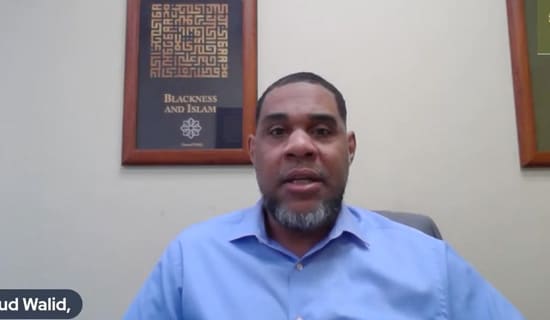At its two-hour emergency meeting in Vienna on October 24, the Organization of Oil Petroleum Exporting Countries (OPEC) decided to lower crude production by 1.5 million barrels/day (b/d), effective next month.
The reduction in production was OPEC's response to plummeting crude prices, which peaked at $147 a barrel last July but are now hovering in the mid-$60s a barrel, and appear to be trending downward. The lowering of production was a compromise between the price hawks of OPEC, primarily Iran and Venezuela that demanded a reduction of 2.5 million b/d, and the largest oil producer, Saudi Arabia, which has refused to be drawn into a situation that runs contrary to its national and strategic interests.
The Saudi Stand
For weeks, the hawks had been calling for lowering oil production to stabilize prices and perhaps even to establish a floor of $70-$100 a barrel. While the hawks' voice had reached a crescendo prior to OPEC meeting, the Saudis had deliberately kept mum on the subject of production cut.
There are two reasons for their deliberate silence. The minor reason has to do with the Saudis' apparent refusal to be seen as in cahoots with the likes of Iranian President Mahmoud Ahmadinejad and Venezuelan President Hugo Chavez, two revolutionary anti-Americans whose policies are viewed as anathema by the conservative Saudis. The major reason has to do with the Saudis' perception of potential conflict with Iran, its Gulf rival. The Saudis have been concerned for several years now about Iran's growing strategic influence and designs for regional hegemony in the Gulf and in a number of Arab countries, primarily Iraq, Syria and Lebanon.
The sharp decline in oil prices has provided the Saudis with an opportunity to inflict pain on Iran and constrain its political ambitions for regional hegemony by keeping oil production high and oil prices down. In practical terms, the Saudi's subtle weapon against Iran is at least as potent as the U.N. and U.S. sanctions combined. An economically weaker Iran translates into an Iran that is weaker both politically and strategically, and hence less of a threat to the Gulf region.
There is one other reason which has recently emerged as a source of conflict between Shi'ite Iran and a number of Sunni countries in the Middle East, particularly Saudi Arabia but also Egypt, Jordan and the Arab Gulf countries. These countries have been concerned about Iranian efforts to engage in large-scale proselytizing of Sunnis into Shi'ism, which is perceived by the majority of the Sunnis, particularly the Wahhabis in Saudi Arabia, as a false religion whose practitioners are apostates.
Implications of Lower Oil Prices
SUPPORT OUR WORK

A recent study by the International Monetary Fund (IMF) has suggested that in order for Iran to balance its budget, the price of crude oil must not fall below $95 a barrel. The equivalent figure for Saudi Arabia is $50 per barrel and for the United Arab Emirates and Qatar even lower. One should keep in mind that Iranian oil sells at a discount compared with the higher quality benchmark West Texas Intermediate.
Countries whose economies rely on the production of natural resources, such as oil, generally establish a stabilization fund for retaining windfall profits, such as when oil went over $140 a barrel, to be used in time of economic shocks, such as a sharp decline in the price of the commodity.
Iran has established such a fund to be managed by its central bank. It would appear, however, that President Ahmadinejad has dipped into the till too often, causing the departure/resignation of two consecutive governors of Iran's central bank in a little over one year. The assets of the Iranian stabilization fund are kept secret; however, a member of the Majlis (parliament) recently revealed that it has a balance of $7 billion, which would just about cover the cost of imported gasoline for one year.
The sharp decline in oil prices will limit Ahamadinejad's ability to keep his election promise to bring money to the dinner tables of Iranians. During the Iranian calendar year of March 2007-2008, Iranian oil revenues were estimated at $80 billion. If prices remain at the present level of $60 per barrel, Iran's revenues in the next calendar year will decline to $64 billion, meaning a budgetary deficit of $7-$30 billion. The U.S. and U.N. sanctions will continue to force Iran to resort to circuitous routes to buy much of its consumer and, even more, dual-use goods at a premium. The Iranian press came out recently with such headlines as "the end of the oil festival," and "the bankruptcy of OPEC."[1]
Iran's Options
Oil revenues comprise 80% of Iran's foreign exchange. If oil prices continue to plummet in the face of the world's worsening economic crisis – a crisis which may be just in its early stages – Iran, unlike the Arab oil-producers with hefty sovereign wealth funds to cushion their national economies, could face politically destabilizing events that could threaten the survival of the regime.
On the economic front, Iran could resort to terminating oil subsidies and restricting the import of non-essential consumer goods to conserve foreign currency. In fact, news from Iran last week suggests that both steps are under consideration.
Iran may also seek to reintroduce a 3% value-added tax (VAT) which it was forced to suspend after shopkeepers in the politically influential bazaars closed shops in protest, arguing that the VAT would further aggravate inflation which reached 29.6% in October.[2]
The price of oil is determined by the twin factors of economics and psychology. Economic factors are shaped by supply and demand and when demand plummets the prices quickly follow suit. But oil prices are also sensitive to psychological factors, such as perceived threats to the sources or routes of oil supply. In the latter case, Iran may seek to generate a crisis that would bring oil speculators back in droves and cause oil prices to spike. In this regard, Iran could put into action one of the following options in an attempt to both divert national discontent outward and make an economic gain at the same time:
First, Iran could escalate the conflict in Iraq to a degree that would deny the market a supply of 1.5-2.0 million b/d of much needed Basra light crude. The Shi'ite cleric Muqtada Al-Sadr, with his Iran-paid Mahdi Army, is a potent troublemaker to carry out such a mission in the service of Iran. Iran could use its many agents in southern Iraq to sabotage the oil pipeline that carries Iraqi oil to Um-Qasr port. In a desperate move, Iran might cause an incident with one of the U.S. naval ships patrolling Iraq's oil platforms.
Second, Iran's Revolutionary Guards could sabotage an oil tanker in the Gulf of Hormuz on some flimsy argument that the tanker has violated Iran's territorial waters. Such act would raise the political tensions to high levels and greatly increase insurance premium to suffocating levels or discourage oil tankers from transporting Gulf oil.
Third, Iran could instigate a conflict between Hizbullah and Israel that could plunge the Middle East into a new round of a military conflict that might also involve Syria (Iran's strategic ally in the area). Armed conflicts in the Middle East quickly translate into higher oil prices, with or without global recession.[3]
*Dr. Nimrod Raphaeli is the Editor of The MEMRI Economic Blog, www.memrieconomicblog.org
Endnotes:
[1] Al-Sharq, Qatar, October 24, 2008.
[2] The regime could also do nothing, telling the Iranians that the economic difficulties were part of a global malaise and that the situation is beyond its control.
[3] Iran could also accelerate its nuclear program and even reveal or test one of its nuclear elements to cause international pandemonium. This scenario is far-fetched but not impossible for an ideologically fanatic regime fighting for its very survival.




